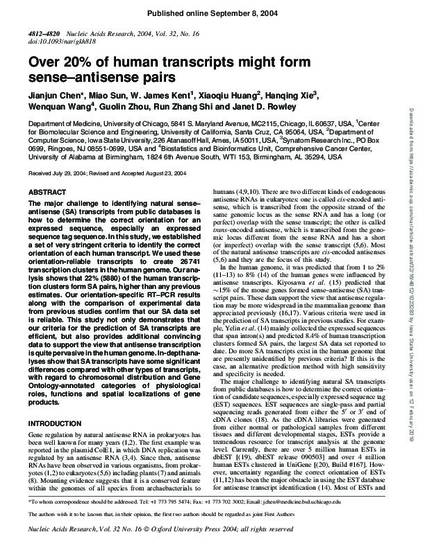
The major challenge to identifying natural sense– antisense (SA) transcripts from public databases is how to determine the correct orientation for an expressed sequence, especially an expressed sequence tag sequence. In this study, we established a set of very stringent criteria to identify the correct orientation of each human transcript. We used these orientation-reliable transcripts to create 26 741 transcription clusters in the human genome. Our analysis shows that 22% (5880) of the human transcription clusters form SA pairs, higher than any previous estimates. Our orientation-specific RT–PCR results along with the comparison of experimental data from previous studies confirm that our SA data set is reliable. This study not only demonstrates that our criteria for the prediction of SA transcripts are efficient, but also provides additional convincing data to support the view that antisense transcription is quite pervasive in the human genome. In-depth analyses show that SA transcripts have some significant differences compared with other types of transcripts, with regard to chromosomal distribution and Gene Ontology-annotated categories of physiological roles, functions and spatial localizations of gene products.
Available at: http://works.bepress.com/xiaoqiu-huang/21/

This article is published as Chen, Jianjun, Miao Sun, W. James Kent, Xiaoqiu Huang, Hanqing Xie, Wenquan Wang, Guolin Zhou, Run Zhang Shi, and Janet D. Rowley. "Over 20% of human transcripts might form sense–antisense pairs." Nucleic acids research 32, no. 16 (2004): 4812-4820. doi: 10.1093/nar/gkh818. Posted with permission.